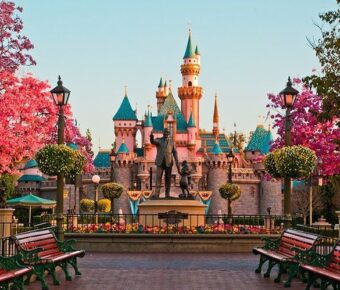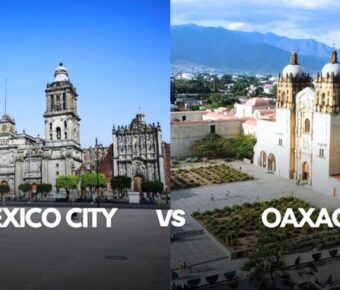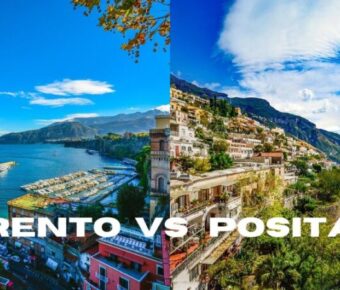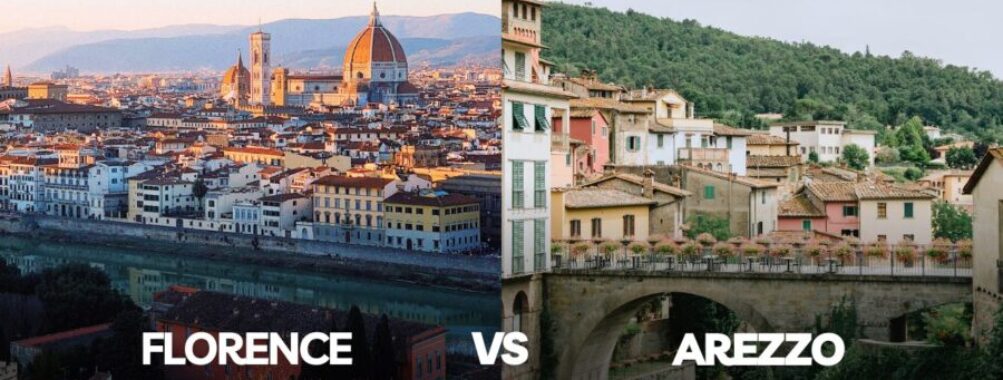
Florence vs Arezzo: Which Historic Tuscan City Offers the Better Hidden Gems?
Florence and Arezzo offer two distinct experiences of Tuscan life. Arezzo provides a more authentic Italian atmosphere than Florence’s tourist-filled streets, letting visitors feel like locals rather than tourists. The smaller city maintains its medieval charm while offering modern amenities.
Living costs in Arezzo are about 17% lower than in Florence, with rent prices nearly 46% cheaper and better local purchasing power. This makes Arezzo an attractive option for people seeking a more budget-friendly base in Tuscany. The city’s smaller size means less crowding and a slower pace of life.
Located 90 minutes apart by train, these cities showcase different sides of Tuscany’s character. Florence dazzles with Renaissance masterpieces and grand palaces, while Arezzo enchants with its monthly antique market and beautiful frescoes. The easy connection between them lets travelers enjoy both cities’ unique charms.
Contents
- Historical Significance
- Ancient Roots and Development
- Renaissance Influence
- Cultural Heritage Sites
- Geography and Accessibility
- Location and Terrain
- Transportation Options
- Artistic Offerings
- Famous Artworks and Artists
- Museums and Galleries
- Lifestyle and Living
- Residential Atmosphere
- Cost of Living Assessment
- Culinary Scene
- Traditional Cuisine
- Dining Experiences
- Tourist Attractions and Activities
- Must-Visit Spots
- Leisure and Recreation
- Unique Local Experiences
- Day Trip Ideas
- Tours Around Tuscany
- Excursions Beyond the Region
- Accommodation and Lodging
- Hotels and B&Bs
- Unique Stays and Rentals
- Practical Travel Tips
- Frequently Asked Questions
- What are the transportation options for traveling from Florence to Arezzo?
- How long does the journey from Florence to Arezzo take by train, and are direct services available?
- Can one enjoy a day trip to Arezzo from Florence, and what are some must-see attractions?
- Are there any notable stops to consider while traveling by train from Florence to Arezzo?
- What are the best ways to explore the Tuscan countryside when based in Florence?
- What travel advice is there for first-time visitors planning a trip from Florence to the Tuscan region?
- More Travel Guides
Historical Significance

Florence and Arezzo shaped Italy’s artistic and cultural identity through centuries of rivalry and influence. The cities exchanged power, artists, and ideas while developing their unique characters.
Ancient Roots and Development
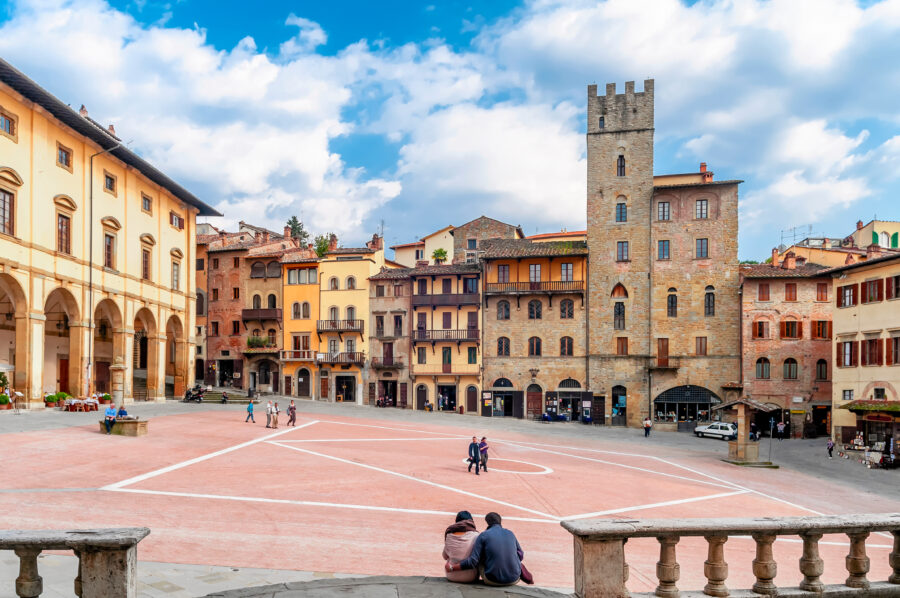
Arezzo started as an important Etruscan city and kept its power during early Roman times. The Romans extended Via Cassia to Florence, shifting trade routes away from Arezzo. This marked the start of Florence’s rise to prominence.
Florence grew steadily in military strength and wealth. The city expanded its territory through strategic battles and acquisitions. A key moment came in 1289 at the Battle of Camaldino, where Florence defeated Arezzo in a decisive victory.
The power balance shifted again when Arezzo fell under Bishop Guido Tarlati’s rule in 1321. He brought a brief period of growth to Arezzo, but the city’s independence didn’t last long. Florence bought Arezzo in 1384, marking a turning point in both cities’ histories.
Renaissance Influence
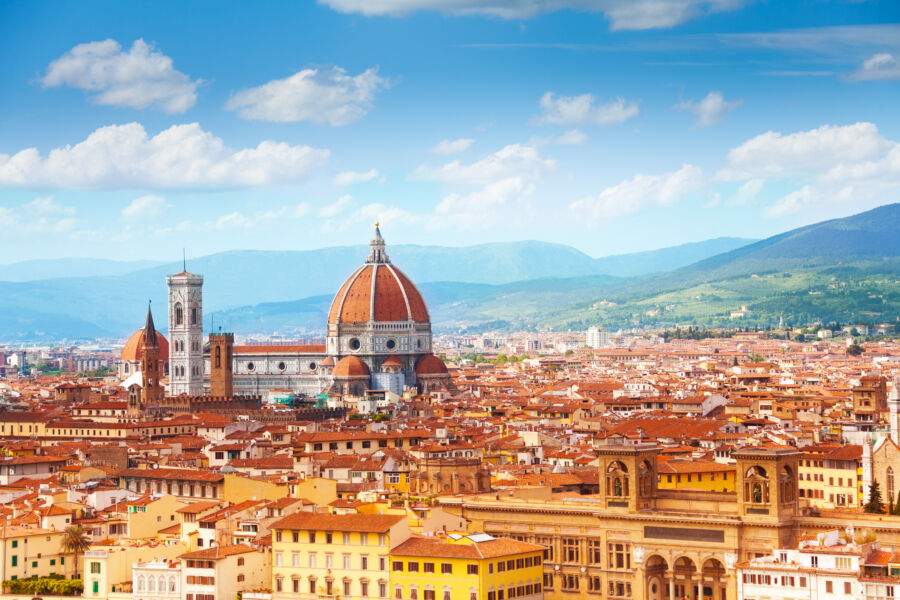
Under the Medici family, Florence became a major Renaissance center. The city attracted artists, scholars, and merchants from across Europe. The Medici built their fortress in Arezzo as a symbol of Florentine control.
Arezzo produced notable artists despite its political decline. The city’s most famous son, Piero della Francesca, created masterpieces that influenced Renaissance art. His Legend of the True Cross frescoes in the Basilica di San Francesco remain an artistic treasure.
The two cities developed different artistic styles. Florence favored grand palaces and elaborate decorations, while Arezzo took a simpler, more traditional approach to art and architecture.
Cultural Heritage Sites
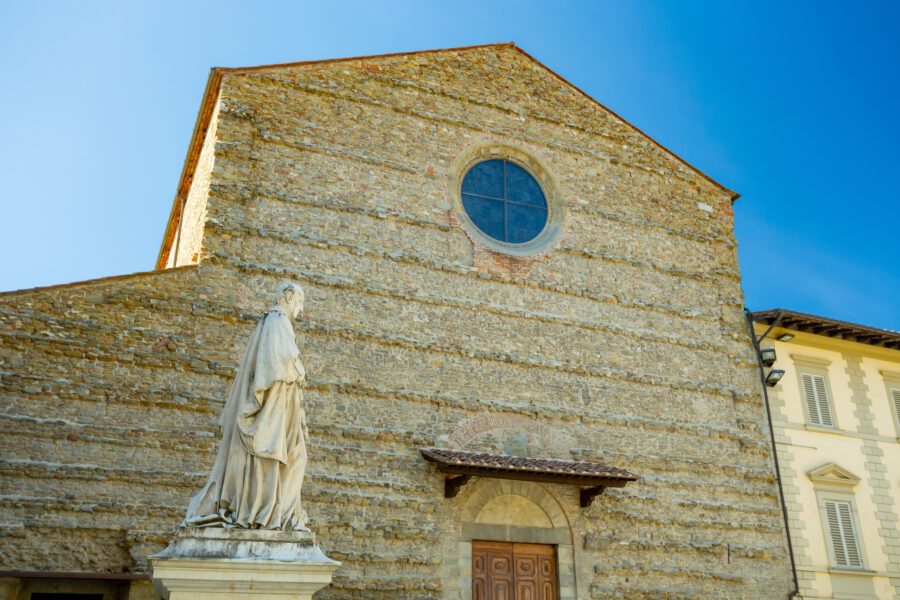
The Basilica di San Francesco stands as Arezzo’s crown jewel. Its walls showcase Piero della Francesca’s famous fresco cycle, drawing art lovers worldwide.
The Medici Fortress, on its hilltop position, watches over Arezzo. This massive structure shows Florence’s military might and architectural skill.
Both cities preserve their medieval streets and buildings. Florence’s grand palaces reflect its wealth as a banking center. Arezzo’s quieter squares and churches show its role as a religious and artistic hub.
Geography and Accessibility
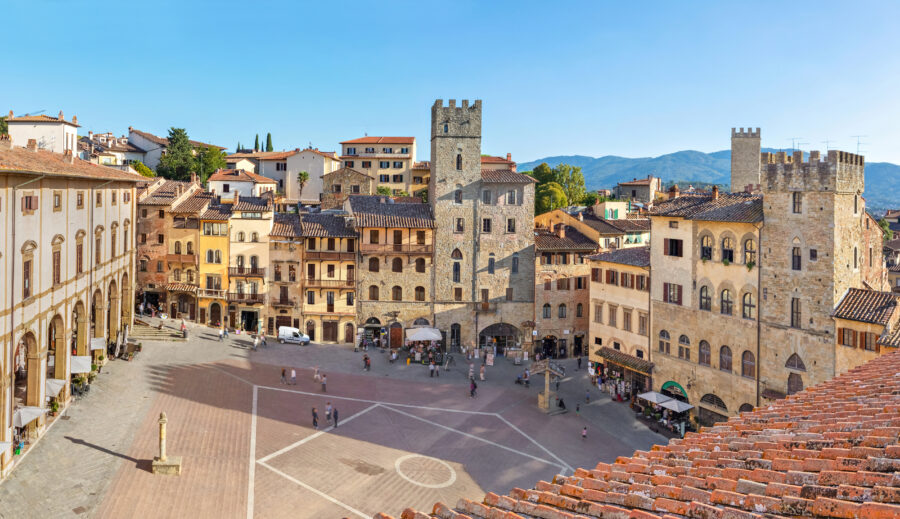
Florence and Arezzo sit in distinct locations within Tuscany’s varied landscape, offering different experiences in terms of terrain and travel connections. Each city’s position shapes its character and affects how easily visitors can explore the region.
Location and Terrain
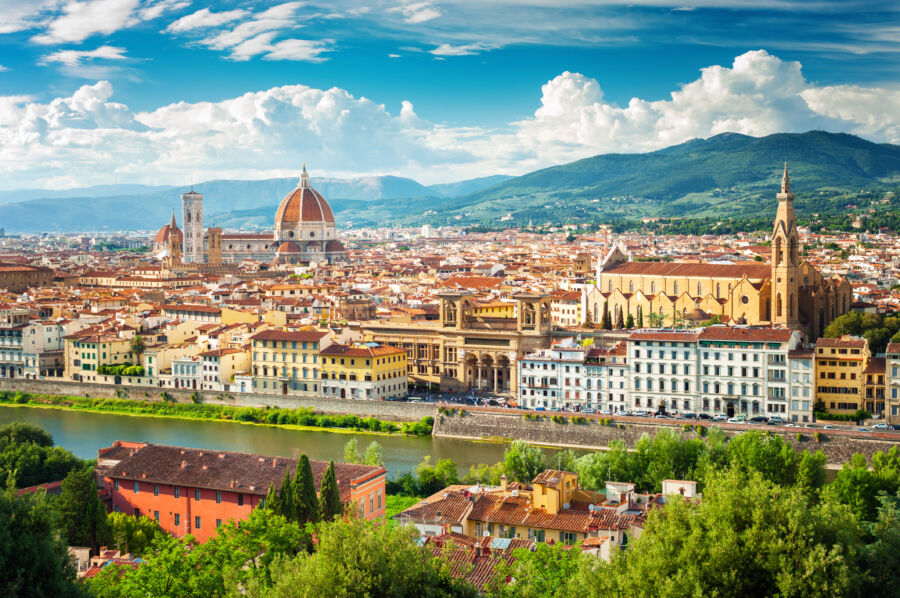
Florence lies in a valley surrounded by hills and mountains, with the Arno River flowing through its center. The city spreads across flat terrain in its historic core, while residential areas climb the surrounding slopes.
Arezzo perches on a hilltop in eastern Tuscany, offering views across four valleys. The city’s elevated position created a natural defense system in medieval times.
The distance between these cities spans about 80 kilometers through the Tuscan countryside. The terrain changes from Florence’s river valley through rolling hills and patches of forest.
Transportation Options

Regular trains connect Florence and Arezzo, with trips taking about 30 minutes on fast trains or 1 hour on regional services. Train stations in both cities sit close to their historic centers.
Buses link both cities to smaller Tuscan towns like Siena and Pisa. Florence’s larger transportation hub frequently connects Rome and northern Italian cities.
Arezzo’s smaller size makes it easier to navigate on foot. Its compact center contains most attractions within walking distance.
Florence needs more planning for getting around. The historic center bans most vehicles, so walking or public transport are the main options.
See Related: Rome vs Florence: Which Italian Gem Steals the Show?
Artistic Offerings
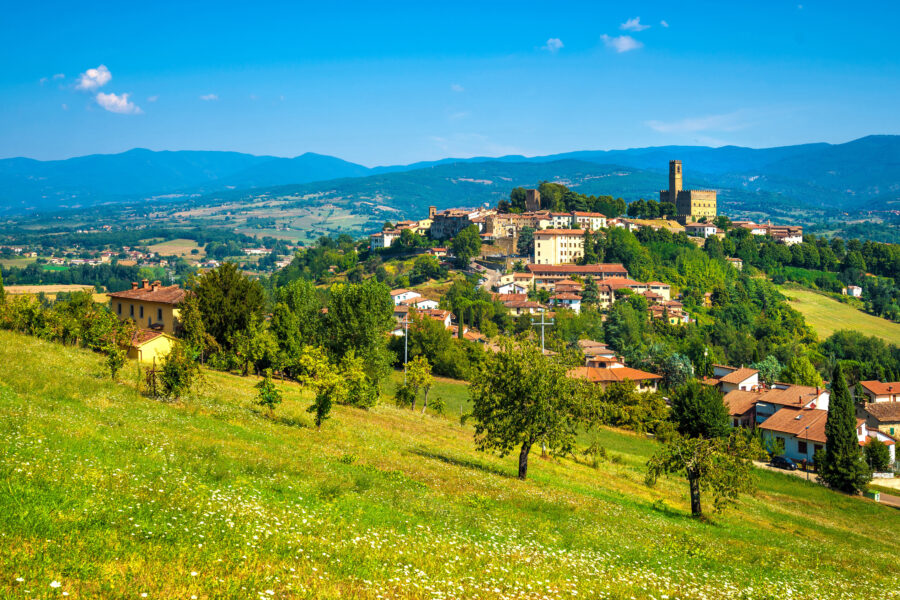
Florence and Arezzo showcase incredible Renaissance art treasures that helped shape Italy’s artistic legacy. Each city preserves masterpieces in unique settings, from grand museums to tiny chapels.
Famous Artworks and Artists

Florence dazzles with Michelangelo’s David at the Accademia Gallery and Botticelli’s Birth of Venus at the Uffizi. The city’s churches and palaces hold countless Renaissance paintings and sculptures.
The artistic crown of Arezzo is Piero della Francesca’s Legend of the True Cross fresco cycle. These stunning 15th-century frescoes fill the Basilica di San Francesco’s Bacci Chapel with vivid colors and remarkable perspective.
The medieval Piazza Grande in Arezzo features architectural works by Giorgio Vasari. His famous loggia frames one side of this sloping square, showing Renaissance design principles.
Museums and Galleries
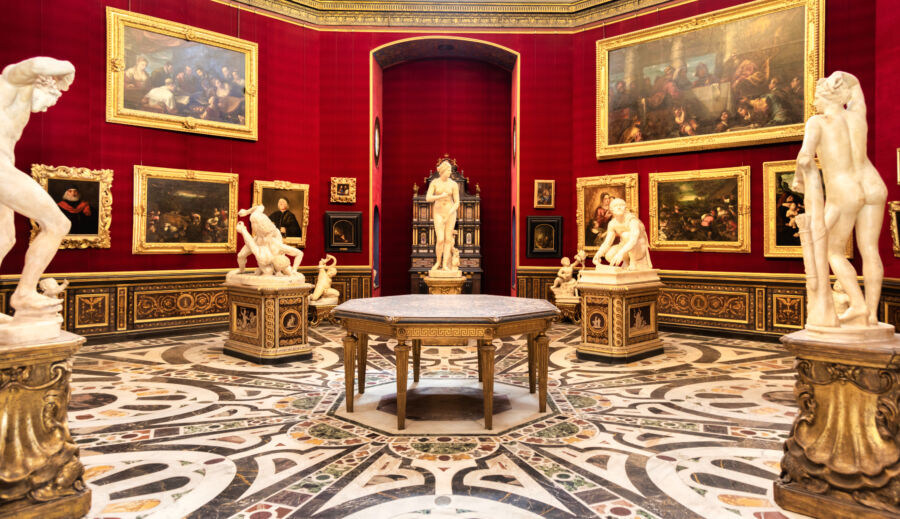
Florence’s Uffizi Gallery ranks among the world’s top art museums. Its 45+ rooms display masterpieces from Giotto to Leonardo da Vinci. The Accademia Gallery and Palazzo Pitti add even more artistic riches.
Arezzo’s museums are smaller but packed with gems. The Medieval and Modern Art Museum houses excellent local paintings and sculptures, and the Casa Vasari museum lets visitors explore the artist’s former home.
The State Museum of Medieval and Modern Art in Arezzo showcases precious artifacts from local churches and monasteries. Its collection includes rare medieval manuscripts and Renaissance pottery.
Lifestyle and Living
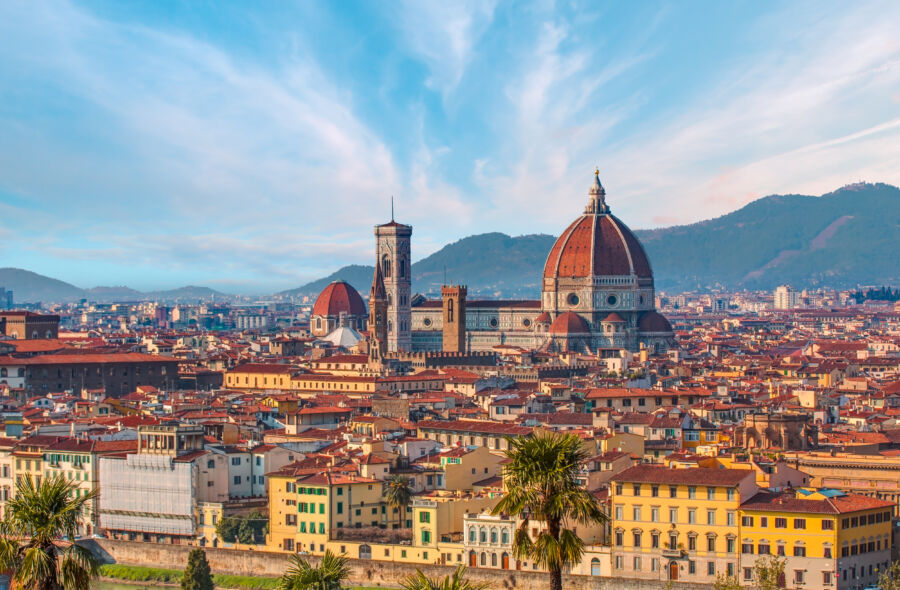
Living in Florence or Arezzo means embracing different sides of Tuscan life. These cities offer distinct experiences regarding daily routines, community feel, and living expenses.
Residential Atmosphere

Florence buzzes with tourist energy and international flair. The streets fill with visitors year-round, creating a lively but sometimes hectic environment. The city attracts students, artists, and expats who mix with locals in its historic neighborhoods.
Arezzo provides a more authentic Italian lifestyle. The streets are calmer, and residents enjoy stronger community bonds. The University of Arezzo adds youthful energy without overwhelming the city’s charm.
Both cities boast excellent transport links. Arezzo is conveniently located between Florence and Perugia, about an hour by train from each. This makes weekend trips and cultural excursions easy to plan.
Cost of Living Assessment
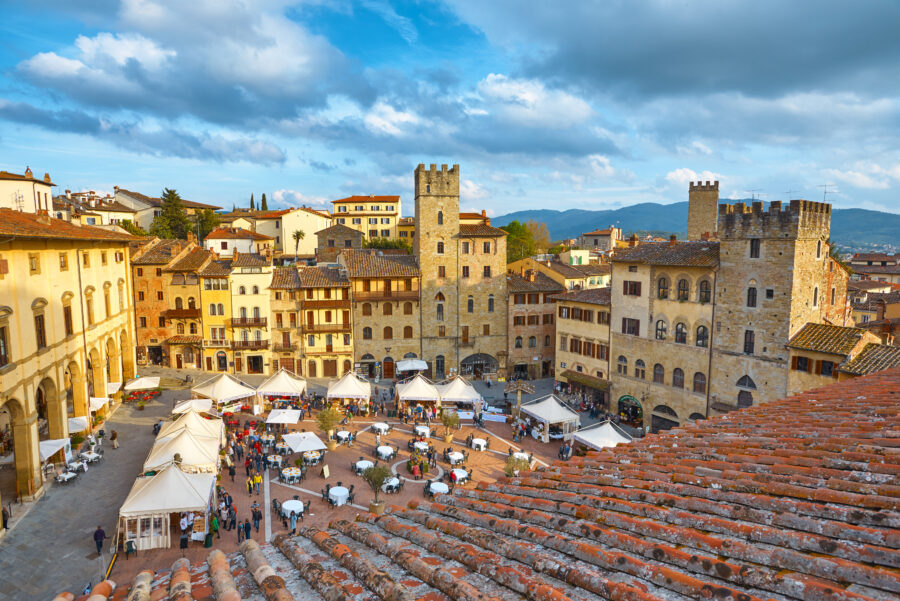
Arezzo offers significant savings compared to Florence—a similar lifestyle costs about 17% less in Arezzo than in Florence.
Monthly expenses for one person in Florence average €1,800, including rent. This covers:
- Basic utilities
- Groceries
- Transportation
- Entertainment
Arezzo’s costs run closer to €1,200 monthly. The most significant savings come from:
- Lower rental prices
- Cheaper dining options
- Reduced entertainment costs
The money saved in Arezzo lets residents enjoy more local experiences, like the famous antique fairs and festivals that bring the city to life.
Culinary Scene
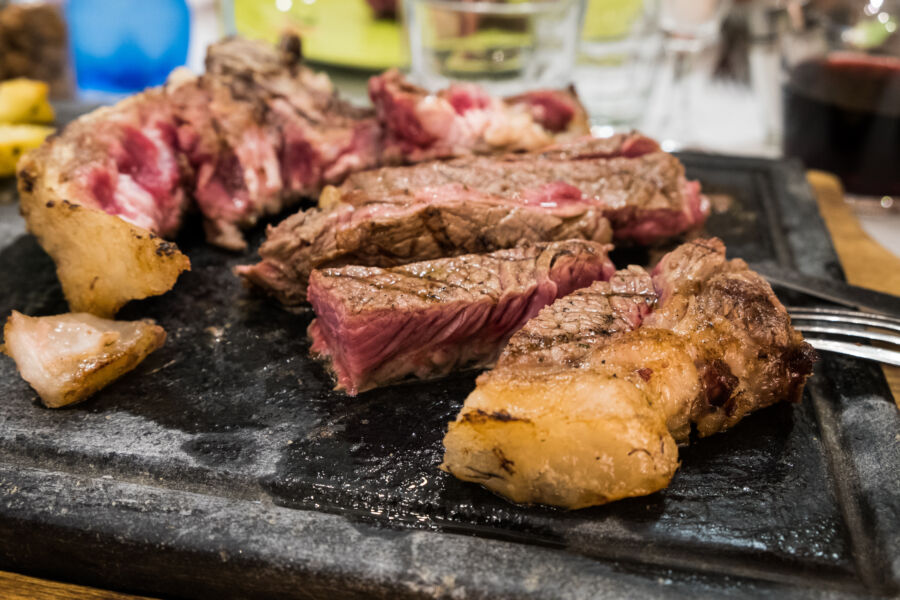
Florence and Arezzo showcase the best of Tuscan gastronomy, though each city brings distinct flavors and dining traditions. These two cities offer unique takes on regional specialties while maintaining deep roots in local ingredients and cooking methods.
Traditional Cuisine
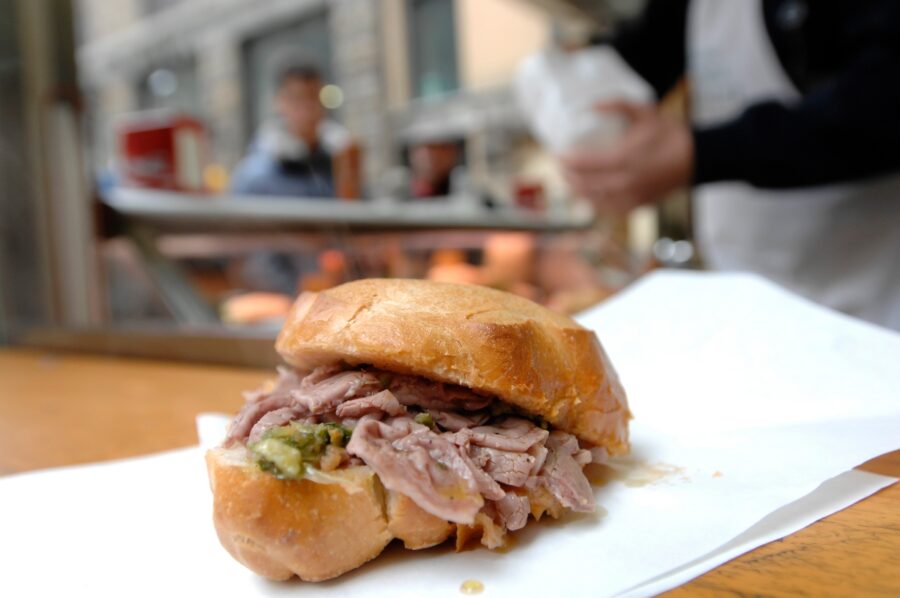
Florence’s food scene centers on hearty classics like bistecca alla fiorentina and ribollita soup. The city’s markets buzz with vendors selling fresh produce, cured meats, and local cheeses.
Street food thrives in Florence, with lampredotto sandwiches and schiacciata bread stuffed with local ingredients drawing crowds at lunchtime.
Arezzo takes a different path, offering special twists on Tuscan staples. The city’s signature dish is maccheroni with goose sauce, showing its unique culinary identity.
Local specialties in Arezzo include seasonal dishes made with ingredients from nearby farms and producers. The city’s location near Emilia-Romagna adds interesting flavor influences to traditional recipes.
Dining Experiences
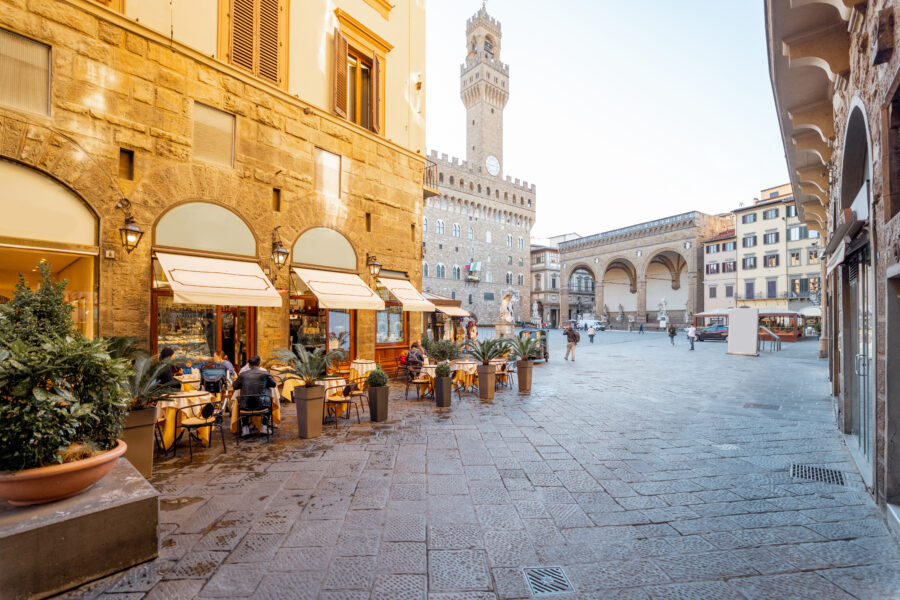
Florence’s restaurants range from casual trattorias to high-end establishments. The city’s dining spots often cater to tourists, with English menus and international wine lists.
Many Florence eateries cluster around popular areas like Santa Croce and Santo Spirito. During peak season, booking ahead is often needed at top spots.
Arezzo’s restaurants focus more on local diners, creating an authentic atmosphere. Chefs here stick to regional ingredients and cooking methods passed down through generations.
The dining scene in Arezzo feels more relaxed and intimate. Small family-run establishments serve traditional meals without the tourist markup standard in Florence.
Tourist Attractions and Activities

Both Florence and Arezzo offer amazing cultural experiences, though they attract different types of travelers. Florence dazzles with famous art and grand architecture, while Arezzo charms with authentic Tuscan character and fewer tourist crowds.
Must-Visit Spots
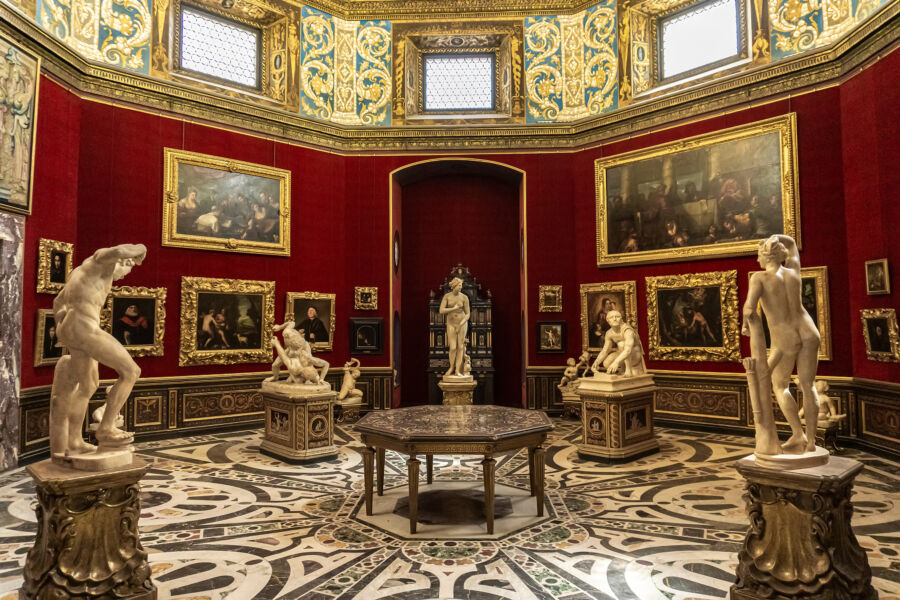
The Uffizi Gallery is Florence’s crown jewel, housing Botticelli and da Vinci masterpieces. The magnificent Duomo, with Brunelleschi’s innovative dome, dominates the city skyline.
Ponte Vecchio draws visitors with its iconic medieval shops and golden views at sunset. The Accademia Gallery lets tourists marvel at Michelangelo’s David in person.
Arezzo’s Piazza Grande is the city’s medieval heart, surrounded by noble palaces and antique shops. The stunning frescoes in the Basilica of San Francesco showcase Piero della Francesca’s Renaissance mastery.
Leisure and Recreation
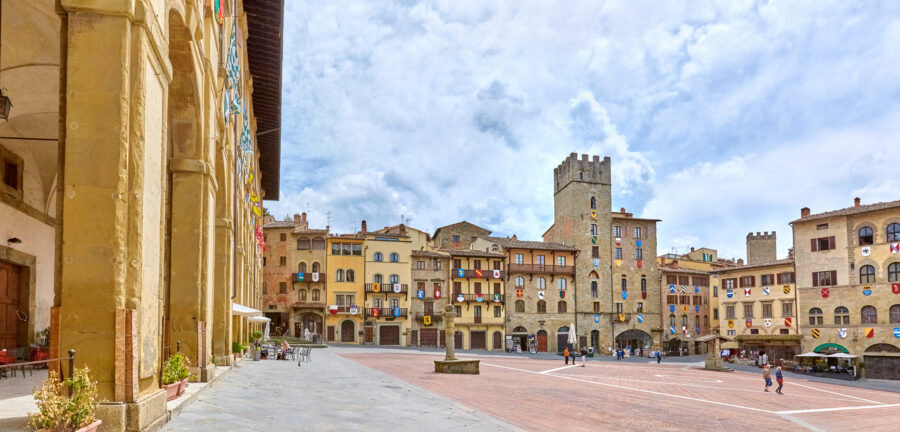
Florence’s Boboli Gardens provide peaceful escape paths among sculptures and fountains. The rose garden below Piazzale Michelangelo offers perfect picnic spots with city views.
Arezzo maintains a slower pace. Its monthly antique fair transforms the streets into treasure-hunting grounds, and local cafes around Piazza Grande let visitors watch daily Tuscan life unfold.
Wine tasting opportunities abound near both cities—small vineyards welcome guests for intimate tastings of Chianti Classico and other regional wines.
Unique Local Experiences
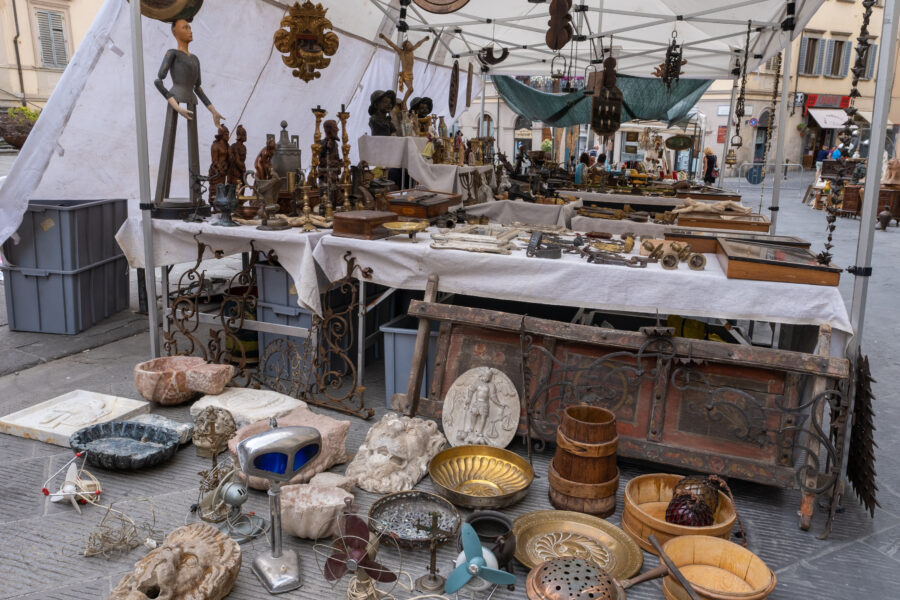
Florence buzzes with cooking classes teaching pasta-making secrets. Evening passeggiata along Via Tornabuoni lets tourists mix with locals while window shopping at luxury boutiques.
Arezzo’s smaller size means deeper connections with local culture. Visitors can chat with artisans in their workshops or join locals at neighborhood trattorias.
Both cities’ Book Things To Do, Attractions, and Tours seasonal festivals showcase Tuscan traditions. Medieval flag-throwing competitions and food festivals celebrate regional heritage.
Day Trip Ideas

Florence and Arezzo are excellent starting points for exploring central Italy’s stunning landscapes and historic towns. Many travelers choose guided tours to maximize their time and avoid transportation hassles.
Tours Around Tuscany
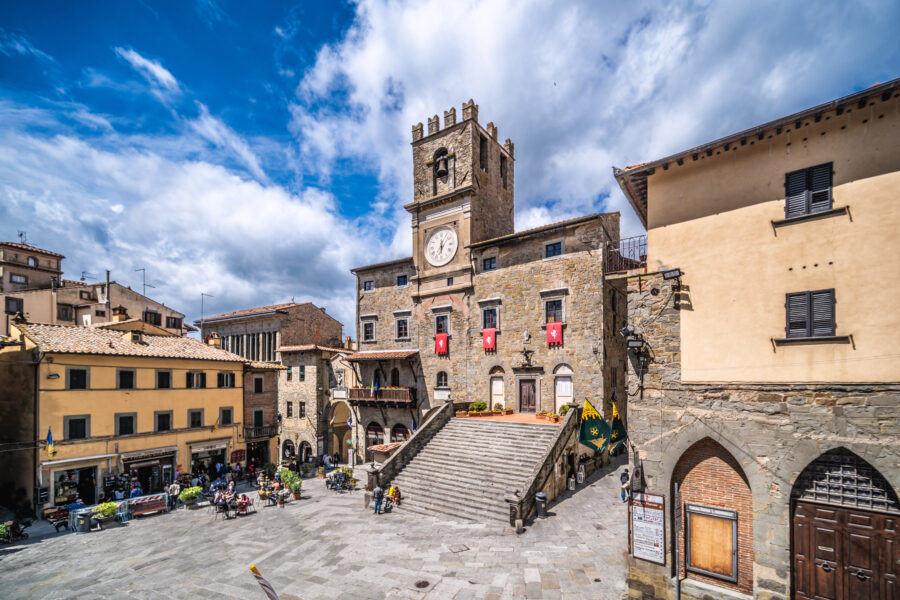
The Val d’Orcia region offers spectacular day trips from either city. You can book guided wine tours to sample famous Brunello di Montalcino and Nobile di Montepulciano wines.
Montepulciano stands out with its Renaissance palaces and ancient wine cellars built into the hillside. Wine tastings here pair perfectly with local pecorino cheese and prosciutto.
Cortona grabbed international attention as the setting for “Under the Tuscan Sun.” Its steep medieval streets and Etruscan walls provide fantastic views across the countryside.
Excursions Beyond the Region

Due to its closer location, Umbria’s gems make for fantastic day trips, especially from Arezzo. Assisi amazes visitors with its pink-stone architecture and Basilica of St. Francis.
Perugia mixes medieval charm with modern energy. Its chocolate factories and jazz festivals add extra appeal to the historic center’s Gothic buildings.
Spello and Todi charm visitors with quiet lanes and fewer tourists than their famous neighbors. These towns offer authentic Italian experiences with family-run restaurants and local artisan shops.
Orvieto sits dramatically atop volcanic cliffs. Its impressive Gothic cathedral features intricate mosaics and frescoes rivaling Florence’s churches.
See Related: Florence vs Turin: Which Italian Gem Should You Visit?
Accommodation and Lodging
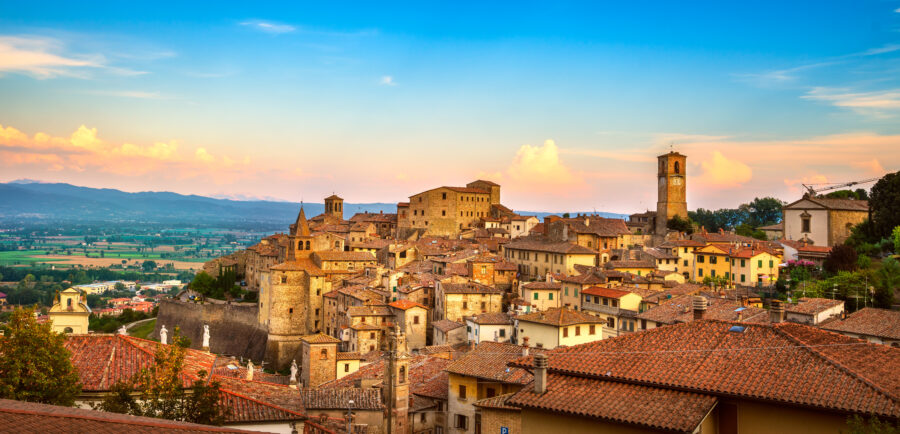
Florence and Arezzo offer distinct lodging experiences at different price points. While Florence has luxurious hotels and tourist-focused stays, Arezzo provides more affordable options with a local feel.
Hotels and B&Bs
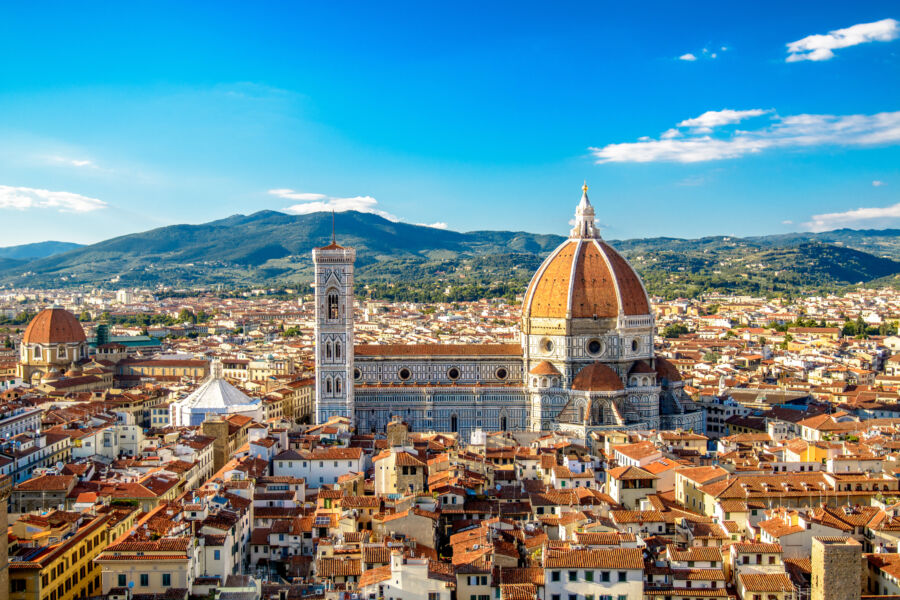
Florence presents many high-end accommodations, from boutique hotels to international chains. Expect to pay more in Florence, with tourist taxes ranging from €3.50 to €8 per night based on hotel rating. Many Florence hotels sit near popular attractions like the Uffizi Gallery.
Arezzo’s hotels cost about 45% less than Florence’s. The city has fewer tourist-focused properties but offers charming family-run hotels and B&Bs—most Arezzo accommodations cluster around the historic center.
Prices in both cities are affected by the peak season. For summer visits, book your accommodations 3-4 months ahead.
Unique Stays and Rentals
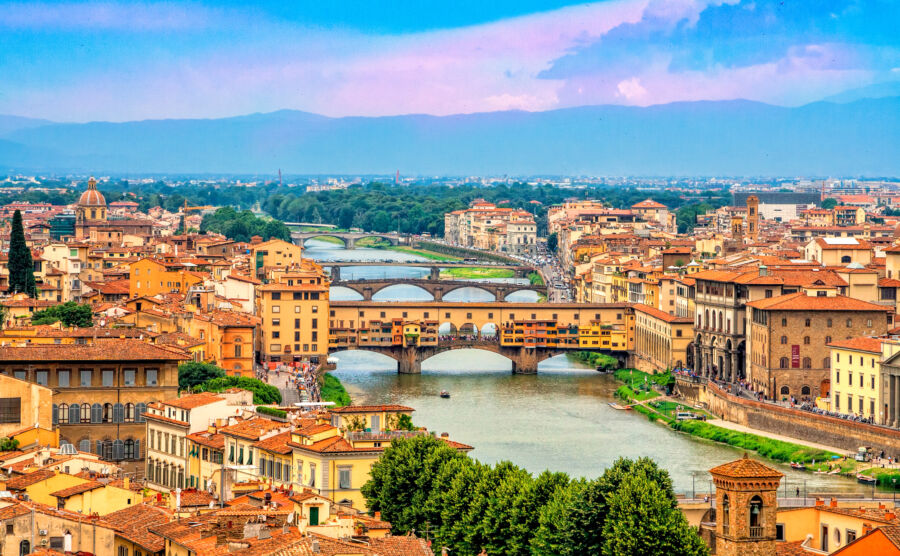
Florence features converted palazzos and historic buildings turned into apartments. Many properties offer views of landmarks like the Duomo. Prices run high due to tourist demand, especially during spring and summer.
Arezzo shines with authentic Tuscan experiences. Old town apartments and restored farmhouses give visitors a taste of local life. The smaller tourist crowds mean more availability and better deals year-round.
Both cities have rental options near train stations. Florence is easily accessible from other major cities, while Arezzo is a peaceful base for exploring Tuscany.
Short-term rentals in Arezzo typically cost 40-50% less than similar properties in Florence. The value improves even more when staying longer than a week.
Practical Travel Tips
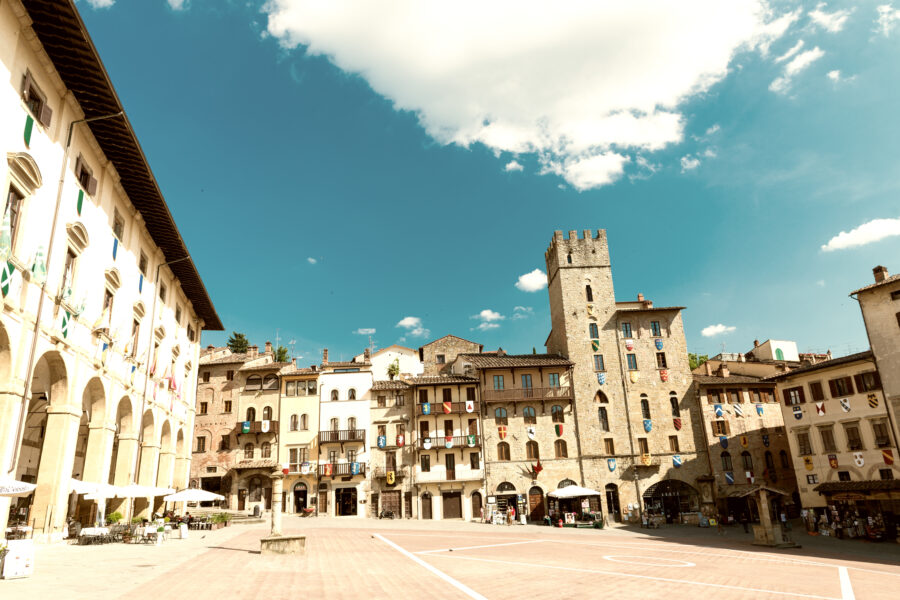
The best way to travel between Florence and Arezzo is by train. Trains run frequently throughout the day and take about 1 hour to 1.5 hours, depending on the service type.
Getting around Arezzo requires comfortable walking shoes. The city sits on steep hills with many inclines, making exploration a good workout. Most attractions are within walking distance of each other.
Train tickets from Florence to Arezzo cost €8-15 each way. To save time, buy tickets at the station or through Italy’s national rail website. Remember to validate tickets before boarding.
The Arezzo train station sits about 10 minutes on foot from the historic center. Follow Via Guido Monaco from the station to the main attractions and shopping areas.
Early morning visits work best in summer to avoid the intense Tuscan heat. Many museums and churches close during lunch (usually 1-3:30 PM), so plan accordingly.
Florence is a better base for exploring the wider Tuscany. Day trips to Lucca, Rome, and other major cities are easier from Florence. Arezzo works better for a quieter local experience away from tourist crowds.
Public buses also connect Florence and Arezzo, but take longer than trains. The journey takes about 2 hours and includes frequent stops in small towns.
Arezzo’s famous antique market is held on the first weekend of each month. If you plan to visit during this popular event, book accommodations well ahead of time.
See Related: Florence vs Naples: Which Italian Gem Should You Visit?
Frequently Asked Questions
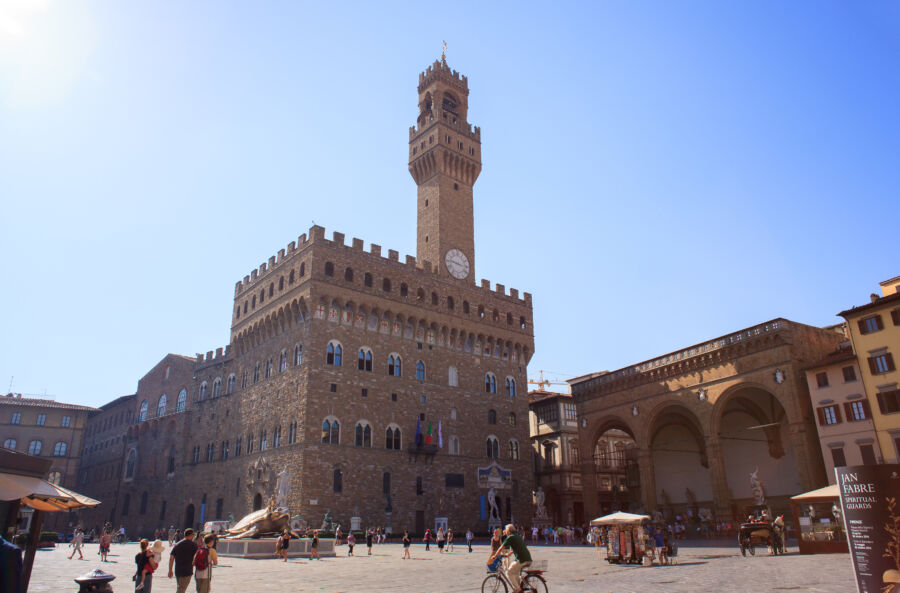
What are the transportation options for traveling from Florence to Arezzo?
Trains are the best way to travel between Florence and Arezzo. The rail service runs frequently throughout the day. Buses also connect the two cities, but they take longer and have fewer departures.
Regional and high-speed trains operate on this route. Tickets can be bought at the station or online before travel.
How long does the journey from Florence to Arezzo take by train, and are direct services available?
The train ride takes between 60 and 90 minutes, depending on the service type. Direct trains run often between the two cities.
Most trains leave Florence’s Santa Maria Novella station and arrive at Arezzo’s central station.
Can one enjoy a day trip to Arezzo from Florence, and what are some must-see attractions?
A day trip to Arezzo fits easily into a Florence vacation. The Church of San Francesco stands out with its amazing frescoes that tell the story of the True Cross.
Piazza Grande ranks as one of Italy’s most beautiful squares. The medieval architecture and historic churches make Arezzo perfect for walking tours.
Are there any notable stops to consider while traveling by train from Florence to Arezzo?
Several charming Tuscan towns dot the railway route. Passengers can see rolling hills and vineyards through the train windows.
The journey passes through the Valdarno area, known for its beautiful countryside and historic villages.
What are the best ways to explore the Tuscan countryside when based in Florence?
Train trips offer easy access to many Tuscan destinations. Popular spots like Siena, Lucca, and Pisa connect directly to Florence by rail.
Combining train travel with local walks lets visitors see cities and rural areas. The rail network reaches most major Tuscan towns.
What travel advice is there for first-time visitors planning a trip from Florence to the Tuscan region?
During busy seasons, book train tickets ahead of time. Morning departures give more time to explore Arezzo’s attractions.
Wear good walking shoes because Arezzo’s historic center sits on a hill. Keep train schedules handy for the return trip to Florence.
